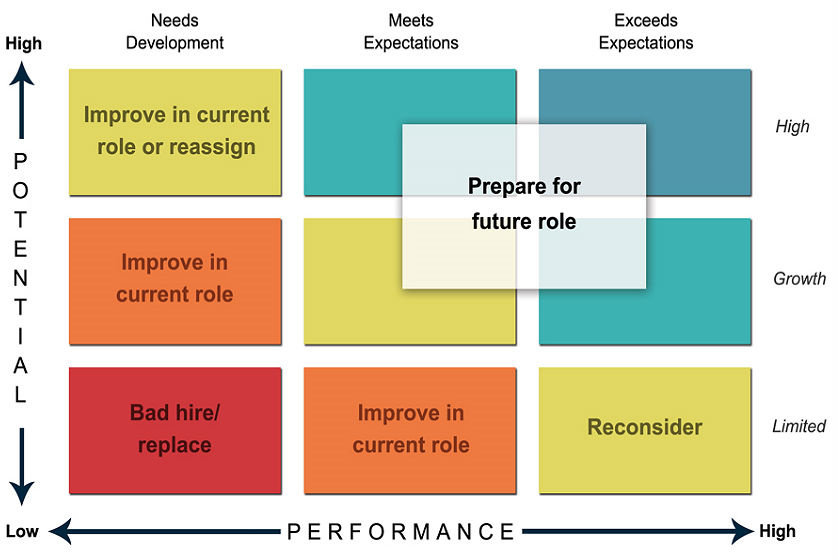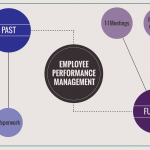How to run effective employee appraisals

Performance appraisals are an opportunity for employers and employees to have a dialogue on past achievements and future development plans.
Using specific performance management tools such as the employee performance plan to include the necessary competencies and behaviors, performance criteria and the expected outcomes, can help avoid bias. Moreover, it leads to employee appraisals that are based on data and reflect on actual accomplishments and progress.
Types of performance appraisals
The three most popular and most used employee appraisal methodologies are the standard appraisal, the 360-degree appraisal and the self-appraisal. The main difference between these methodologies is the hierarchy of appraisers. The standard appraisal process is either a 1 on 1 meeting, or a meeting between a main appraiser, the appraisee and other appraisers.
However, 360-degree appraisal is a multi-source assessment where other stakeholders (colleagues, subordinates, etc.) can also contribute; through this method more than one viewpoint is assessed, thus surpassing the traditional supervisor-subordinate feedback model.
In the self-appraisal process the only participant is the appraisee. However, it is considered beneficial for the organization to add this type of evaluation to the performance appraisal process, as it gives employees an active role instead of the role of the listener, while it facilitates a broader perspective for managers and appraisers.
One of the biggest disadvantages of self-evaluations is that employees’ perceptions of themselves and their performance is not objective, therefore using solely self-evaluations is not an option and managers will still need to monitor performance through other methods as well.
Performance appraisal tools
There are several tools that, if developed and used accordingly, can ensure effective appraisals, such as the Individual Scorecard, the Competencies List and the Desired Behavioral Commitment. These tools can all support such evaluations and it is recommended to use them in order to avoid subjectivity and emotional decision-making.
Individual Scorecard
The Performance Scorecard groups organizational/departmental/individual KPIs under strategic objectives thus providing a great structure to monitor performance (based on target completion) and identify areas of improvement. Individual scorecards therefore define performance expectations based on the Departmental and Organizational Scorecards, the Job Description and the Performance Plan.
Competencies List
The competencies list, or competencies framework is a list of attributes necessary to successfully fulfill a specific role. It is used to evaluate employee competencies from two perspectives: self-assessment and manager assessment, both assigning a score from 1 to 5 for each competence.
Competencies are structured from individual to organizational level, therefore, when developing such a framework for employees, it is recommended to cascade the Organizational Competencies Framework and complete it with the specifics of the job.
Desired Behavioral Commitment
Employee behaviors should reflect the organizational values at the individual level, therefore it is important to define expectations and describe desired behaviors associated with corporate values. This document assesses the individual’s commitment to these values on a scale of 1 to 5. Examples of such behaviors: responsibility, respectfulness, autonomy, creativity, honesty, etc.
Evaluating overall employee performance can be done through the # Overall performance index, which represents the average of the Scorecard score, the Competencies score and the Behaviors Score.
Additional tools to consider for effective performance appraisals
Individual Dashboard
Unlike scorecards, dashboards focus on day-to-day activities: they provide insights to KPIs relevant to specific business processes and operations and are a useful tool to facilitate data-based decision making on all organizational levels.
Having specific dashboards for employees that encompass the most important KPIs – with targets, historical data and evolution – surely contributes to a successful performance review meeting.
Individual dashboards are especially used in sales to monitor sales force performance and hold sales representatives accountable. In order to encourage teamwork, employees monitor the key metrics of the company and their departments, but individual dashboards are used as an employee motivation tool and a tool for ensuring that performance standards are met.
Some common KPIs appearing on sales employee dashboards are:
- $ Sales per employee
- # Leads generated
- % Lead conversion rate
- $ Revenue per sale
- # Closed deals in the sales pipeline
The 9-Box Tool
This matrix can contribute to a more complete picture of employee performance and helps in succession planning and employee development as well. The 9-Box tool evaluates employees based on their performance and potential; senior management, through a collaborative effort, arranges them into one of the 9 categories in the matrix. This tool is especially useful in succession planning and employee development planning.

The HR Department of the Tennessee Government is using the 9-Box Tool in their succession planning practices. Their succession planning strategy focuses on improving the percentage of critical roles with more than one qualified internal candidate as well as the employee engagement results regarding growth and development.
The department uses the Nine Box Tool in their annual talent reviews and the results are assessed and implemented through investments in growth opportunities that meet the needs of the organization’s talent.
Common mistakes in the individual evaluation process
Ill-fitted performance indicators
When KPIs are not role-specific, cascaded from the organizational scorecard, or when they are not measurable, they become a frustration to both the employee and the evaluator.
KPI selection is one of the biggest challenges in performance measurement, as they need to be relevant, clearly defined and balanced to facilitate employee engagement and improve performance.
Focusing on the negative
While avoiding negative feedback altogether is not recommended, it is important to address poor performance. Focusing solely on the negative aspects of performance can cause employee disengagement and even lower performance levels. Organizations focusing on employee strengths are proven to increase performance, productivity and profitability.
One-sided evaluation
It is not recommended for the appraisal process to focus on the supervisor/evaluator judging the employee’s progress and competencies; a best practice is to use self-evaluation techniques as well and let the employee present their self-appraisal, this way encouraging a two-way conversation where both sides can share observations, recommendations and discuss potential issues.
Recommendations
There are many alternatives to the formal, yearly performance appraisal. The following best practices can improve the review process and focus on a constructive approach:
- Regular, more frequent conversations on performance, besides the annual review, such as the mid-year evaluation and the occasional informal evaluation of employee performance;
- Discussing development plans instead of exclusively focusing on past performance;
- Multi-source feedback (or 360-degree performance evaluations) that provides an opportunity to gather inputs from more staff members than the standard evaluation procedure;
- Using software enabled data and automated data collection systems to be able to offer instant feedback on individual performance.
Image source:

Tags: Employee Assessment, Employee Performance, Performance appraisal





